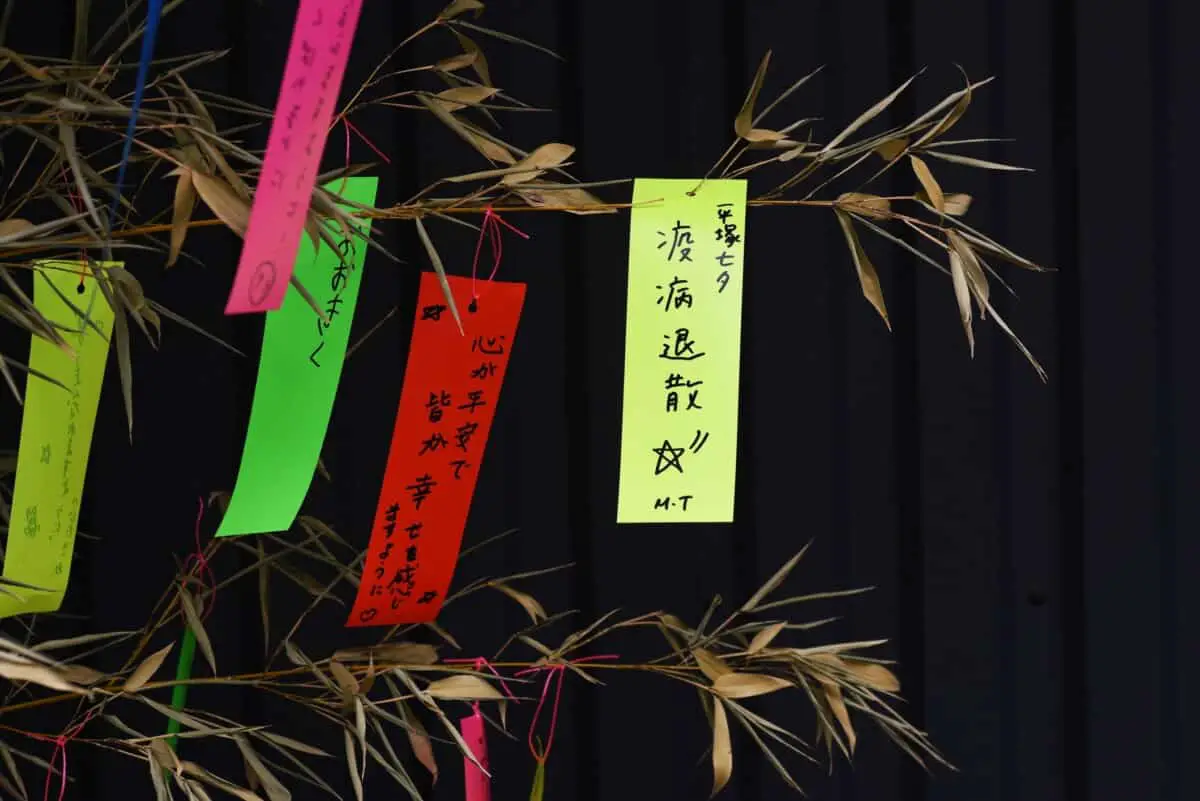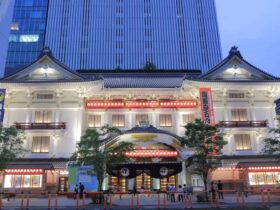Many of the festivities celebrated in Japan have unique backstories, and customs have arisen from commemorating these special stories. Tanabata Festival is no exception.
The Tanabata Festival is a longstanding tradition in Japan surrounding a beautiful, mythical love story. Participants in the festival will make wishes on this special day, and you can enjoy participating as well if you are in Japan in the summer.
The Origin Of The Tanabata Festival
The Tanabata Festival is also referred to as the Star Festival, and it is usually celebrated beginning July 7th of every year.
This festival is celebrated far and wide throughout Japan and other countries, so the specific festivities look a little bit different depending on where you are celebrating.
Tanabata has been celebrated for centuries, starting in the 700s because of Empress Koken.
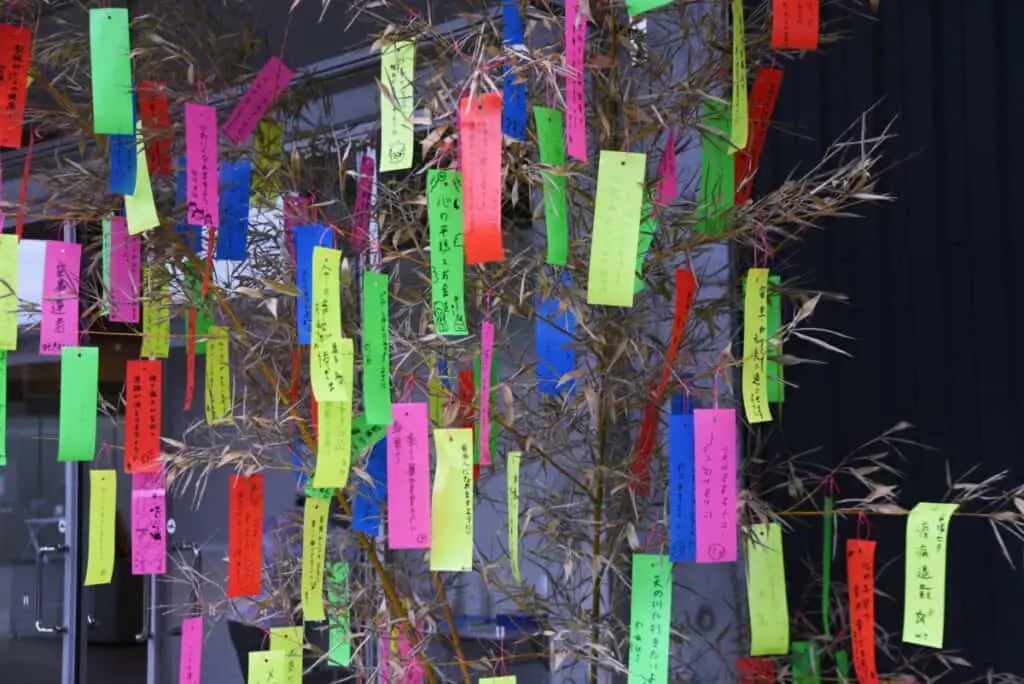
The festival started gaining momentum around the Edo period, taking inspiration from Chinese festivals as well as other festivals celebrated around the same time in Japan.
The Tanabata Festival was inspired by a somewhat similar festival from China known as the Qixi Festival. Tanabata is also known as the Star Festival as the two lovers are also represented by stars, Vega and Altair.
The Qixi Festival
The basis of the Qixi Festival is very similar to the Tanabata Festival, which is celebrated on the seventh day of the seventh month based on the Chinese calendar.
The festival also commemorates two lovers, based on The Cowherd and The Weaver Girl lore, but the specific story is a little bit different than the Japanese version.
The Name Tanabata
The name Tanabata was given to this festival, which came to be a combination of different festivals, partially because of how kanji letters 七夕 are read in Japanese.
Kanji is a lettering system used by both China and Japan, but they interpret some pronunciations and meanings differently.
It is also said that the name Tanabata was adopted for the festival due to inspiration from an old Shinto ceremony that used to be performed during the same time of year as the current Tanabata.
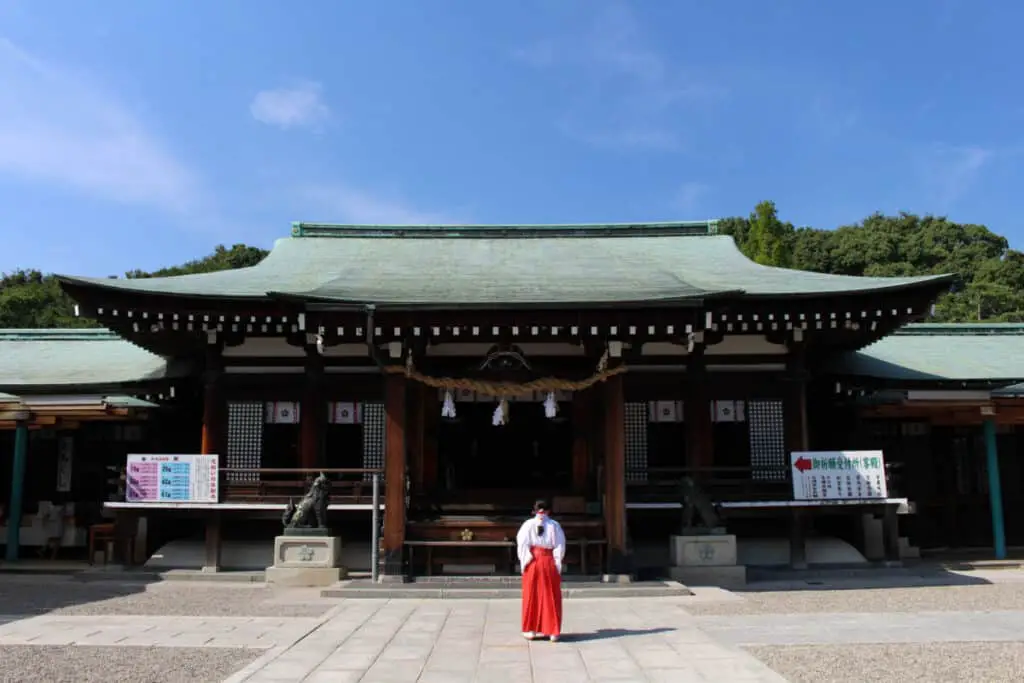
This old Shinto ceremony consisted of a Shinto Miko, or young priestess, making an offering to the gods to wish for nourishment and prosperity for their rice crops.
This offering was a woven cloth that was woven together using a loom, and the loom was called a Tanabata.
The Love Story Surrounding The Tanabata Festival
The love story that Tanabata Festival commemorates is similar to the one celebrated by the Qixi Festival in China. It is inspired by an old folklore tale from China, known as The Cowherder And The Weaver Girl.
The story celebrated in Japan during Tanabata goes that there were two deities, Orihime and Hikoboshi, who were in love.
However, they were far apart within the galaxy, and they would only be able to be together on one day of the year. This day fell on the seventh day of the seventh month.
It is said that if it rains on this day, the couple cannot come together and have to wait another full year to try again.
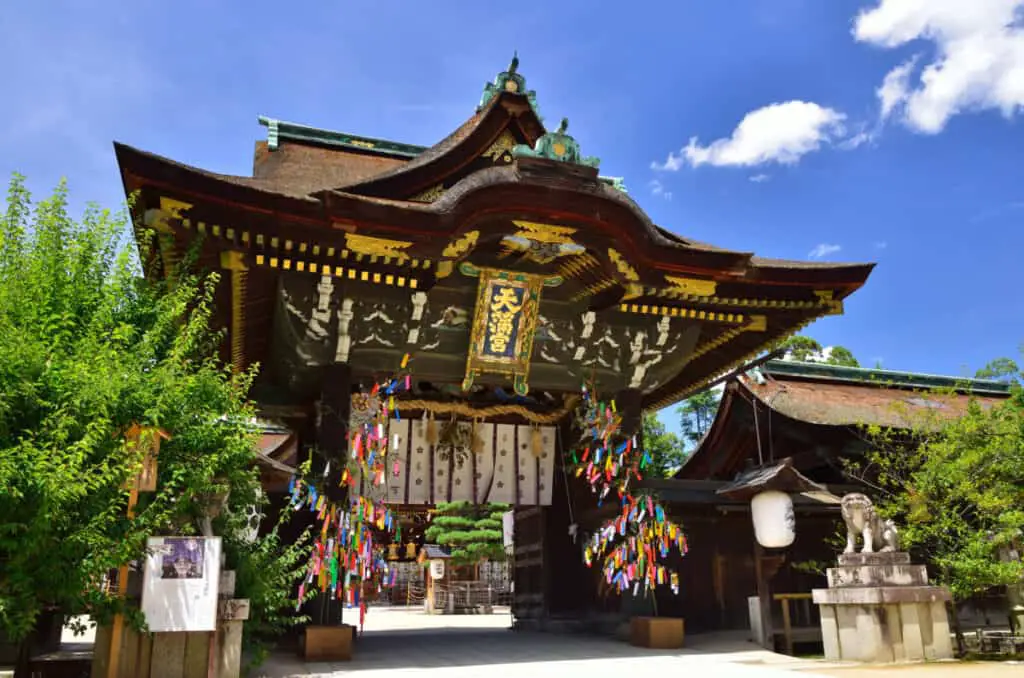
The Cowherd And The Weaver Girl
Orihime was a talented weaver who was able to create beautiful clothing, and she did so day in and day out. Since she worked so hard, she wasn’t able to meet a potential partner, which made her very sad.
Her father, Tentei the Sky King, felt bad, so he had Hikoboshi come and meet her. It was love at first sight.
After these two were married, both of them stopped working. Orihime stopped weaving her clothing, and Hikoboshi, a cow herder, no longer kept control of his cows.
Tentei got very mad and decided to push the couple apart on different sides of the Milky Way, or Amanogawa.
Seeing his daughter so upset about losing her love, Tentei decided that they could come together on the seventh day of the seventh month if they could figure out a way to do so.

The two were separated by a river, but Orihime’s tears attracted magpies who made a bridge with their wings so the two could reunite.
Other Theories Surrounding The Origin Of The Tanabata Festival
There is some lore about the two stars, Vega and Altair, and what they represented. It’s said that Vega is the weaver star, and Altair is the agriculture star. This aligns very well with The Cowherd And The Weaver Girl story.
It is also said that on the seventh day of the seventh month, the two stars, also known as Orihime and Hikoboshi, are the two stars in the Milky Way that shine the brightest on that night.
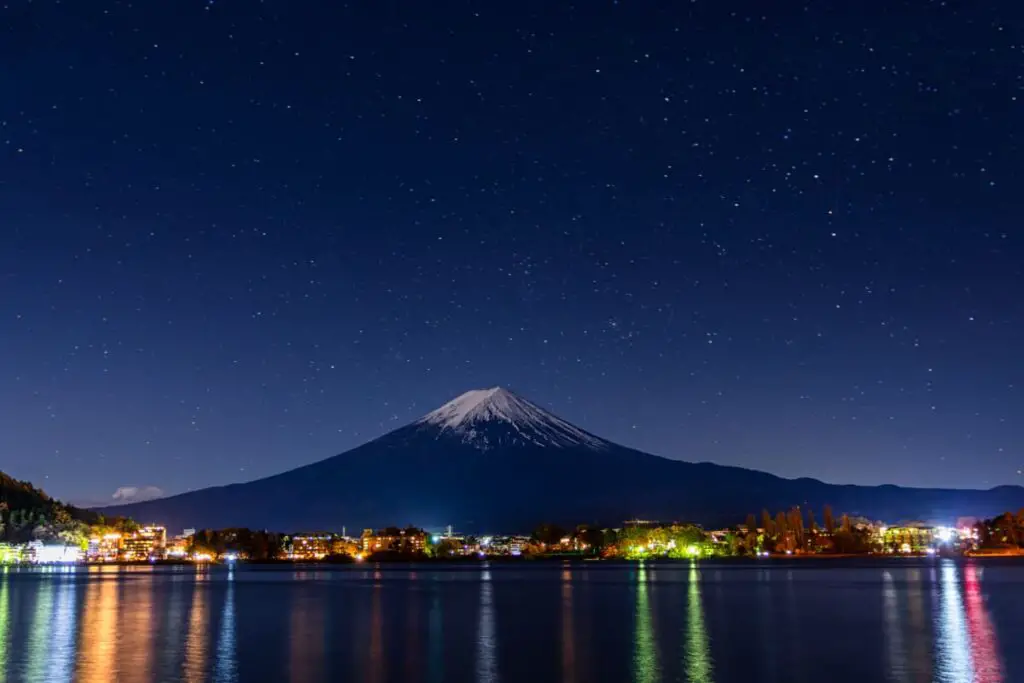
The Date Of The Tanabata Festival
The original date that the Tanabata Festival was celebrated was July 7th, as it would be the seventh day of the seventh month. However, this date was based on the lunisolar calendar, which Japan no longer uses.
Japan now uses the Gregorian calendar, which is one month ahead of the lunisolar calendar. Thus, the festival may be on different dates of the year, sometimes falling in August rather than July.
Tanzaku Cards
Being that the Tanabata Festival falls on such a special day, there is a custom practiced throughout Japan where people will write wishes on tanzaku cards, which are made with colorful pieces of paper.
You can then hang these tanzaku cards on bamboo, or they typically get hung on a tree. These tanzaku cards create a colorful and quite stunning effect hanging off of bamboo or tree branches.
Once the festival has commenced, these tanzaku cards are sometimes gathered off of the trees and are typically lit on fire before being set on a float to cross a river.
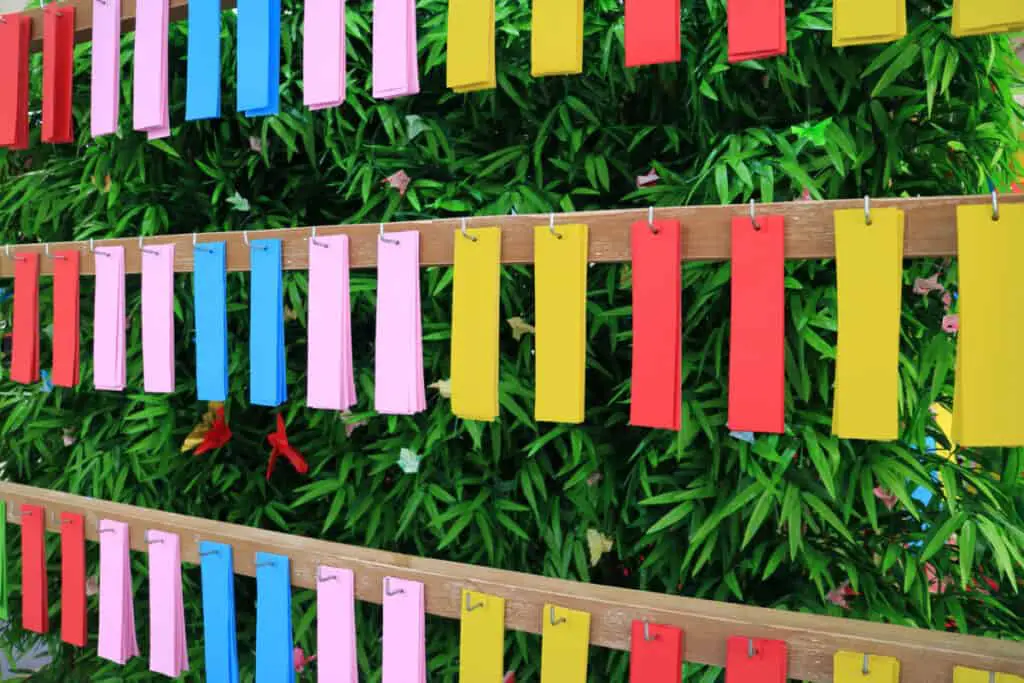
The Origin Of Tanzaku Cards For Wishes
Before tanzaku cards were made from sheets of colorful paper, wishes were usually manifested using taro leaves.
Back in the Edo period, it was common for the aristocrats of the area to make offerings to the gods, which usually consisted of food. They would then spend the night watching the stars shine and listening to music.
In the morning, they would collect the taro leaves which were usually covered with dew, said to come straight from the Milky Way. This dew would be used to make ink, which was subsequently used to write wishes.
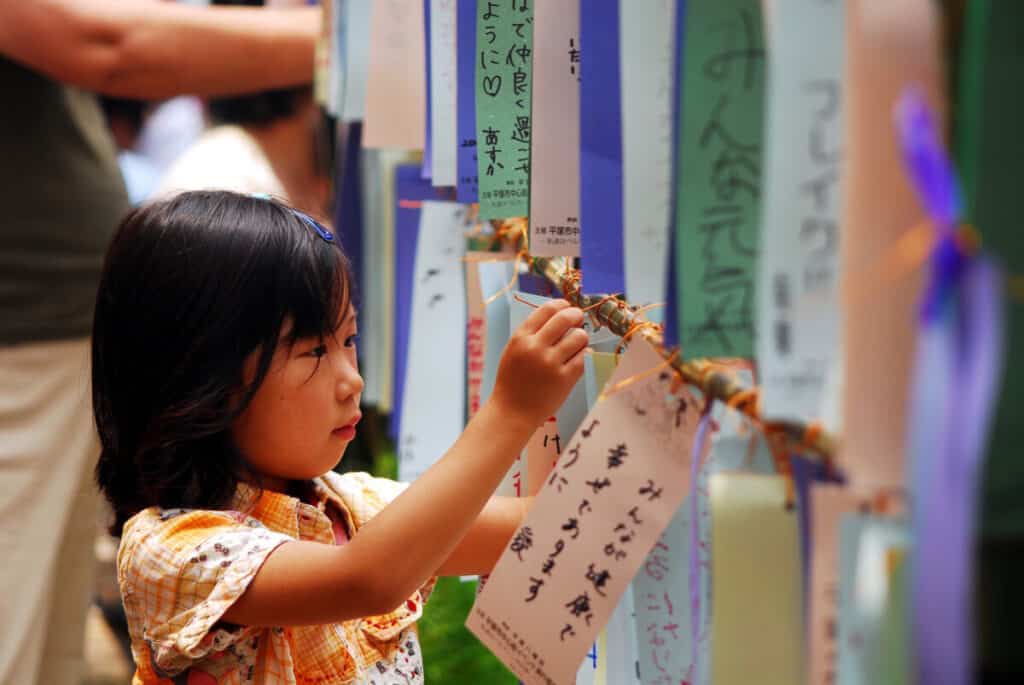
How Wishes Have Evolved During Tanabata
When making wishes first became a custom during Tanabata, there were certain things that were wished for.
Young girls and women, generally wished to refine their sewing skills, while young boys and men wished to improve their writing and penmanship skills.
Now, there are fewer rules surrounding what kind of wish a person can make during Tanabata.
Tanabata Festivals Throughout Japan
Tanabata Festival festivities vary throughout Japan, and there are some areas where the festivals draw in big crowds every year.
Sendai, a city in the Miyagi Prefecture, holds one of the most prominent Tanabata Festivals in Japan, making it the perfect destination to stay in during the summer in Japan.
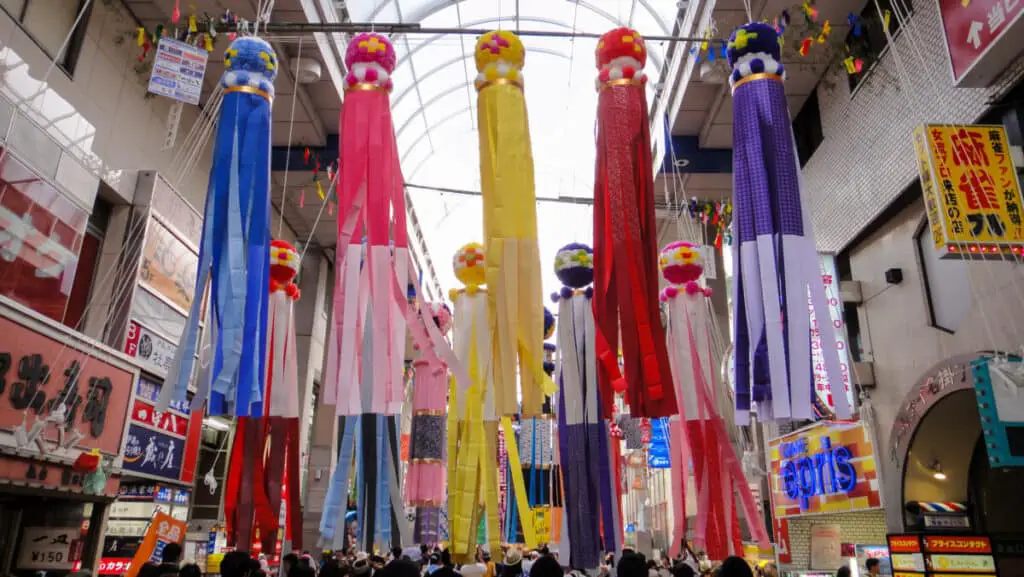
There are also big Tanabata Festival celebrations in Asagaya, Tokyo, and Hiratsuka, Kanagawa.
Tokyo Disneyland and Tokyo Disney Sea will sometimes hold their own Tanabata Festival celebrations, with Mickey and Minnie starring as the star-crossed lovers from the origin story.
Sendai Tanabata Festival
If you are able to get to Sendai in the summer, you will have an unforgettable experience participating in the Tanabata Festival. The city has been celebrating Tanabata for years, not long after the city was first established.
The festivities had to be halted for a little bit during the Second World War, but afterward, the festival came back in full force. Sendai has some of their own unique traditions that they engage in during the festival.
Each of these traditions symbolizes a way to wish for things such as health, success, and the future, and includes tanzaku cards. They are often used to decorate the city, creating a beautiful sea of color throughout.

Sendai Traditions
Apart from tanzaku cards, which Sendai Tanabata participants typically fill out to wish for a good future and a thank you to the earth, there are some other specific decorations used that correspond with a specific wish.
For example, paper cranes are created to wish for health and prolonged life, and fukinagashi streamers are hung to wish for weaving skills to get better.
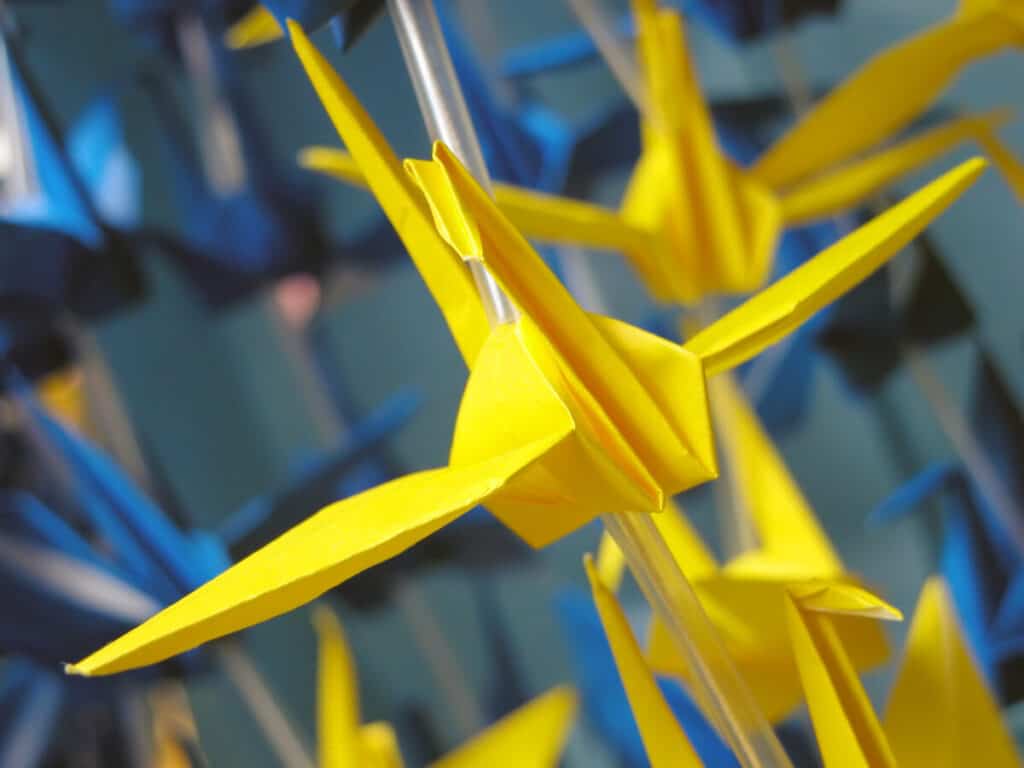
There are also kinchaku purses made to hope for business prosperity, and kuzukago trash bags to wish for a clean home.

